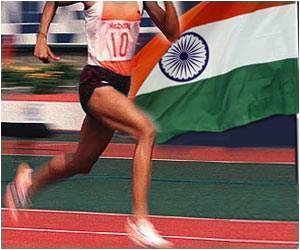India is on the throes of yet another independence day. It means yet another round of flag hoisting, salutations and ceremonies --a time when most Indians will be wearing national pride on their sleeve!
This independence day let us analyze the health scenario and discover our true health status; are we a healthy nation, or are we at least inching towards our goal? We now don’t seem to mention the famous slogan “ Health for all by 2020.’In a country like India, which is undergoing social and economic upheaval, health is of quintessential concern. While good health is an indicator of individual and national well being, it also impacts economic outcome as lack of health is capable of putting entire families, and the nation at large, in a financial mess.
The Rural-Urban Divide
Health care is easily available in urban locales so much so that India, particularly the metros in southern India, became hubs of medical tourism activity. However, in the rural districts health care and management is pitifully lacking. This is perhaps a reflection of the skewed growth that India as a whole represents.
This is not to undermine some of the great achievements attained by this country which is struggling with a burgeoning population, illiteracy, ignorance and socio-economic imbalance.
Some National Health Facts
a) Life expectancy at birth has increased for males and females to 64.1 and 65.8 years respectively. This is mainly due to a rise in the quality of health services.
b) Mortality
WHO Report of ‘99 gives the main causes of mortality in India as-
• non-communicable diseases (48 percent),
• communicable diseases (42 percent)
• injuries (10 percent).
There is a decline in the overall mortality with a marked improvement in health care and its availability.
The infant mortality rate has declined from 70 infants per 1000 live births in 1999 to 57 in 2005-06 per 1000 live births.
Maternal mortality rate is quite high, due to socio economic reasons. Again, this could vary with regions within the country.
c) Morbidity
In India, the overall prevalence of TB is 544 per 100,000. There is a 16% increase compared to 467 per 100,000 during the last survey.
TB is more prevalent among males than in females and its incidence is higher in rural areas compared to urban areas. India has over 3.4 million tuberculosis patients – i.e. 20% of world population with TB are from India. A WHO report indicates that “India is the number one country in terms of TB prevalence and an alarming 17 percent of patients who have availed themselves of treatment earlier have developed multi-drug resistance (MDR),” the report adds that 325,172 people in India had died of the disease in 2005 alone.
• Incidence of Asthma too has risen. It affects 2468 persons in every 1,00,000 population. This condition too, like TB, is more prevalent among men than in women and affects the rural folks more than the urban people.
• Jaundice and malaria too are more prevalent among the rural folks than among the urban people.
National Sample Survey Organization conducted a survey in 1991 and this study estimates that around 1.9 percent of the population are disabled. Previous statistics are not known and therefore a clear comparison is not possible between the past and present status.
Save our Women, Save India
Lack of rules and legislations have brought vested interests all over the world to our country and some of the international drug trials have come under cloud. The legislations for drug trials, stem cell research, surrogacy are either non-existent or inadequate. There are some sketchy guidelines on certain issues but no punitive legislation and this leaves a lot to be desired when some companies or individuals wish to make these commercial.
Easy availability of surrogates have even brought couples, many of them gay, from far and wide. School – girls are incited to donate eggs and women from lower middle class are used for impregnation for surrogacy at nominal costs and in some instances the same women rents out her womb more than once. Exploitation of women be it for flesh trade, kidney or liver donation or surrogacy never seems to stop in India.
More Focus
There need to be more focus on the following areas of health infrastructure, its availability, utilization, monitoring and prevention –
• More focus on public health must be brought about by implementing systemic changes
• Due to the changing lifestyle in India diseases such as diabetes, heart –related disorders and HIV/AIDS are on the rise. There is an immediate need to improve screening facilities for these diseases all over the country on a wider scale.
• More widespread availability of medical facilities with good infrastructures and well -trained staff
• Mental health care management must be given equal importance as that of physical health care
• The growing unethical nexus between health care providers and pharma companies must be monitored and busted, when ever necessary
• Patient redressal forums must be improved
• Good quality life-saving medicines must be made easily available for all, at affordable prices
• The governing institutions, and the government at large, must be made more accountable for all the major health –related outcome in the country.
There is still a long way to go before we truly begin to celebrate.
Ref- India has highest TB prevalence: WHO - http://www.thaindian.com/newsportal/health/india-has-highest-tb-prevalence-who_10030803.html#ixzz0waxUf1tC
Source-Medindia









